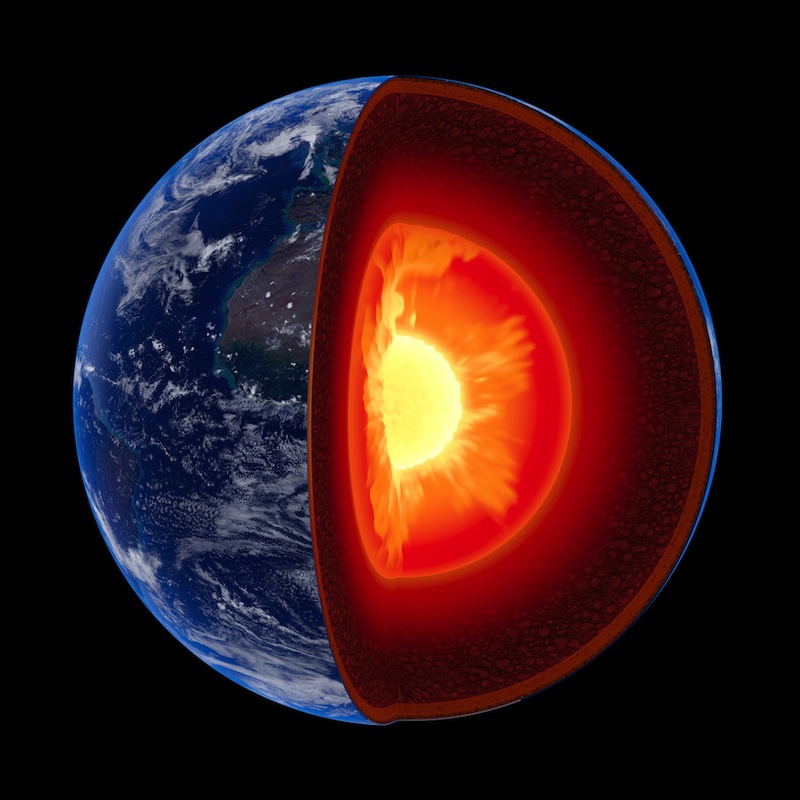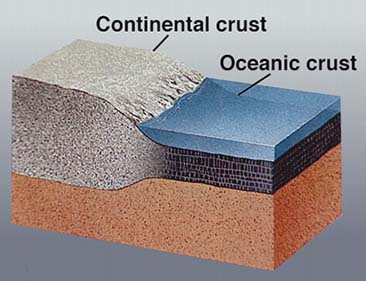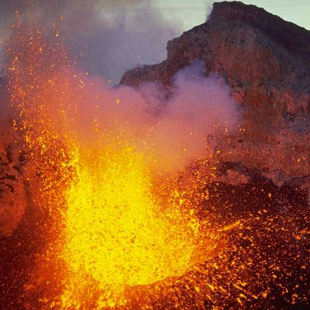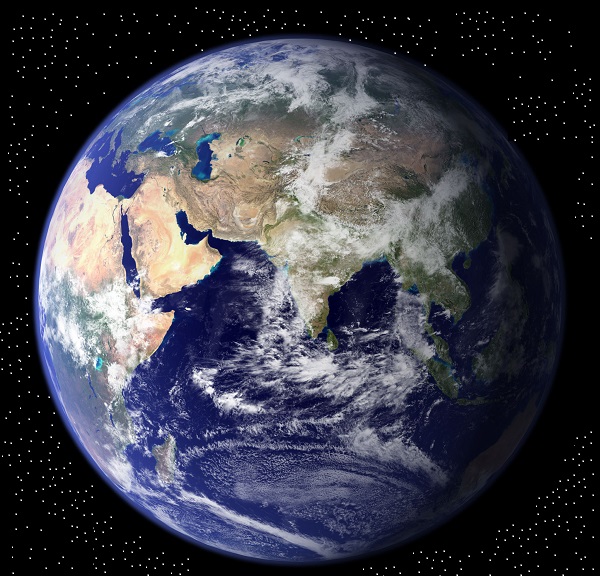Inside Earth

The Earth is made up of layers of rocks which surround a nucleus. The layer on the outside is called the Earth’s Crust and is a thin layer of solid rock. Under this is the Earth’s Mantle, a mass of rock fused together.
Deep inside the Earth is the nucleus, or core. The outer part of the nucleus consists of liquid rock, whilst the inside is solid. This is also the hottest because it is under the most pressure. The deeper inside the Earth, the greater is the temperature.
The interior structure of the Earth is layered in spherical shells.
Earth's Crust
The Earth's crust is solid but made of parts which move very slowly.
The Continental Crust which forms Earth’s dry land is thick, but consists of light rock. It is thickest beneath the mountains.
The Oceanic Crust which constitutes the ocean bed is composed of heavy rocks but is thinner.
The Earth’s crust is about 35km thick on average, beneath mountain chains it can be as thick as 70 km.

Magma
The outer part of the Earth’s mantle consists of dense, glutinous mass of fused rock. This is the magma, on which the Earth’s Crust floats. The Magma is constantly moving and sometimes bursts out of volcanoes.

Rocks
The rocks of the Earth’s Crust are made up of different combinations of various minerals which have different origins.
Magnetic Rocks
Magnetic or igneous rock is formed when the magma cools and solidifies, coming out of volcanoes then rising up towards the Earth’s Crust.
Basalt, pumice and granite are all examples of magnetic rocks.

Sedimentary Rocks
Sedimentary rocks are formed of rock fragments, remains of animals or plants, which together with other substances, are carried by water and wind and deposited on the beds of oceans or lakes or on dry land. These remains then become solidified and cemented together, and in time transforms into rock.
Sandstone, limestone and clay are all examples of sedimentary rocks.

Metamorphic Rocks
Some rocks, following the devastation of the Earth’s Crust, collapse into the interior of the Earth and because of the heat and the pressure; they become completely changed, transformed into metamorphic rocks. Slate, marble and gneiss are examples of metamorphic rock.

Gems
When magma cools, the material which it contains solidifies in the form of crystals. Gems are crystals with particular characteristics of color, hardness and the way they can reflect the light. They are cut in such a way as to highlight these qualities. They are used in making of Jewellery.


